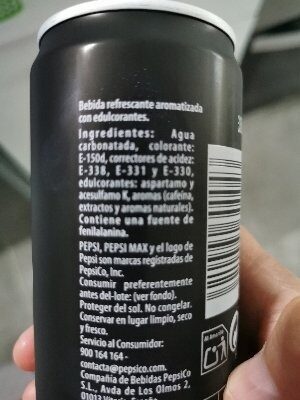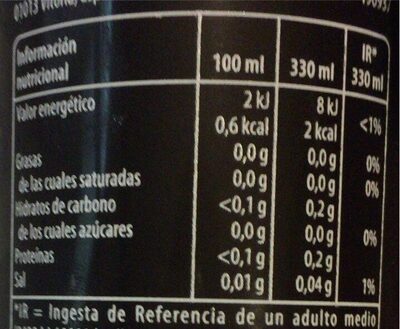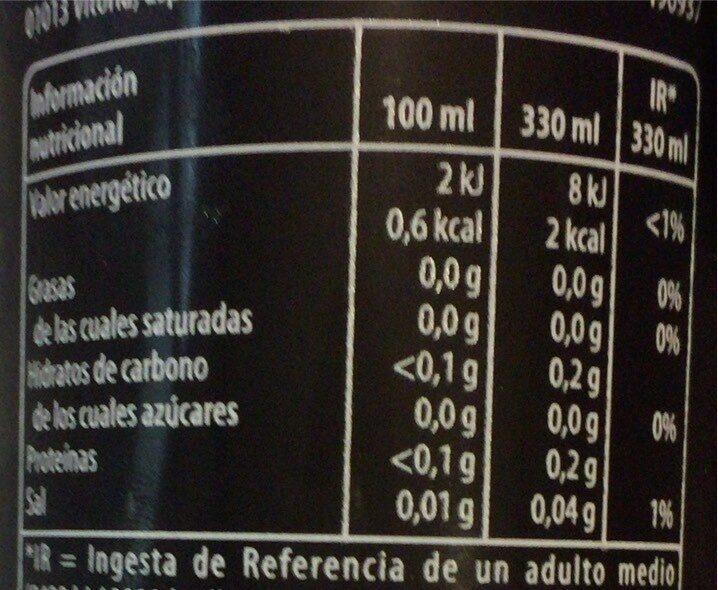Pepsi Max - 330 ml
Barra-kodea: 8410494300043 (EAN / EAN-13)
Izen arrunta: Bebida refrescante aromatizada con edulcorantes
Kopurua: 330 ml
Ontziratzea: en:Can
Markak: Pepsi
Kategoriak: en:Beverages, en:Carbonated drinks, en:Artificially sweetened beverages, en:Sodas, en:Diet beverages, en:Colas, en:Diet sodas, en:Diet cola soft drink
Etiketak, ziurtagiriak, sariak: en:Low or no sugar, en:Contains a source of phenylalanine, No sugar
Origin of ingredients: Espainia
Manufacturing or processing places: España
Traceability code: 190937
Link to the product page on the official site of the producer: https://pepsimax.es/productos/pepsi-max
Dendak: Alcampo, El Corte Inglés, Carrefour, Mercadona
Saltzen diren herrialdeak: Espainia
Matching with your preferences
Report a problem
Datuen iturria
Product added on by kiliweb
Last edit of product page on by elfarto.
Produktuaren orria -gatik editatua foodless, openfoodfacts-contributors, org-app-elcoco, packbot, rafitamolin, thaialagata, yuka.BIhQBdCUAOE9N_SJjqQ98zSaScjJHMNpI2xVog, yuka.HLVDH_OoJZ0KOvT775wP9yeaS_v8HqJ1KV8cog, yuka.VplyGeKoGJQuNfP3j6Y40AC4O77pPuZzFGFWog, yuka.WGIwTU5Jb0tpOEJVc1BGdTBCek0rdWdzK2FLVkJXV1hHdk5MSUE9PQ.











